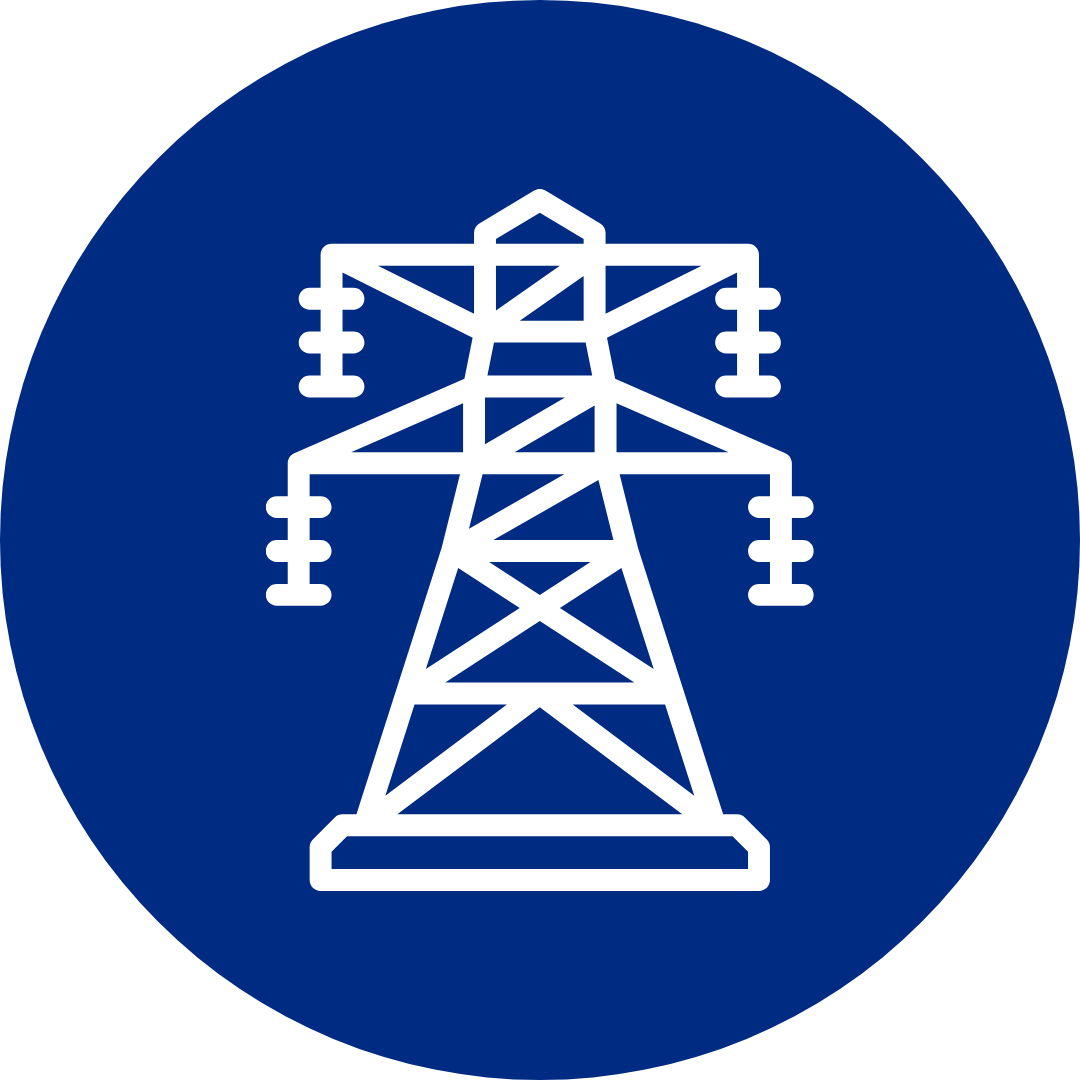Choosing the correct cables is a vital part of building a reliable security camera system. With so many types of wiring and connectors on the market, it can be confusing to know which is right for your needs. Understanding the differences between cable options helps ensure clear footage and stable performance for any surveillance system.
Some cables send both power and video signals, while others may only handle video. Users must also think about the environment, such as indoor versus outdoor installations, and how cable quality affects the system. The right cabling can make your setup simpler, help avoid problems, and ensure your cameras work well over time.
Key Takeaways
Proper cable selection is essential for any surveillance system.
Different cables suit different cameras and environments.
Knowing the basics of wiring helps with smooth installation and fewer issues.
Why Choosing The Right Wiring Matters
Selecting the correct cables and connectors has a major effect on how well a security camera system works. The right wiring helps avoid common problems like signal loss, interference, and safety hazards.
Reliability And Image Quality
The quality and type of cable used directly impact video clarity. Coaxial cables, like RG59, are standard for analogue and HD CCTV cameras. For IP cameras, Ethernet cables (Cat5e or Cat6) deliver both power and video through a single line using PoE (Power over Ethernet).
Choosing a cable rated for the distance between the camera and the recorder is crucial. Cables that are too thin or not shielded can lead to blurry images, dropped frames, or total signal loss. Using the proper connectors, such as BNC for coaxial or RJ45 for Ethernet, ensures a secure connection, reducing the chance of interruptions.
Proper wiring also helps to reduce interference from things like nearby electrical lines and other electronics. For longer runs, shielded cables or twisted pair designs help keep the video feed clean and stable.
Safety, Weatherproofing And Compliance
Wiring choices also affect safety and compliance with regulations. Outdoor installations require cables rated for harsh weather, UV exposure, and moisture. Weatherproof cables prevent water from reaching the copper core, which protects against rust and signal degradation.
For fire safety, some building codes require the use of plenum-rated or fire-resistant cables in walls or ceilings. Using cables not rated for these environments can create risks during an emergency. It is important to follow local electrical codes and use certified cables and connectors wherever required.
Secure cable management is key for both safety and system durability. Proper routing, use of conduit, and avoiding high-voltage lines helps prevent physical damage and electrical hazards. This not only keeps the system running smoothly but also helps meet safety standards.
Types Of Security Camera Cables
Security camera systems rely on the correct cable type for clear video transmission and dependable power delivery. The main cable options—coaxial, siamese, and ethernet—serve analog or IP cameras and are chosen based on system requirements and installation needs.
Coaxial (RG59, RG6) And Siamese (Power + Video)
Coaxial cables, mainly RG59 and RG6, are standard for connecting analogue CCTV cameras to a DVR. They carry video signals over long distances with minimal interference. RG59 is suitable for most residential or small business installations, while RG6, being thicker, is better for longer cable runs due to improved shielding and less signal loss.
Siamese cables combine both a coaxial video cable and two power wires in a single jacket. This design allows installers to run power and video in one route, making installation simpler and neater. It is commonly used for analogue and HD-over-coax cameras, such as TVI, CVI or AHD systems. BNC connectors are typically used for the video, while a simple DC plug is used for power.
Table: Typical Applications
Cable Type | Use Case | Max Distance (Approx.) | Common Connectors |
RG59 Coaxial | Analogue/HD-TVI cameras | Up to 300m | BNC |
RG6 Coaxial | Long-distance installs | Up to 500m | BNC |
Siamese (RG59) | Power + video for CCTV | Up to 300m | BNC, DC plug |
Ethernet (Cat5e, Cat6) And Power-Over-Ethernet (PoE)
Ethernet cables—Cat5e and Cat6—are used with IP cameras. These cables carry digital video and data signals. Cat5e is sufficient for standard installations, handling up to 100 Mbps speeds, while Cat6 is better suited for networks needing higher performance or future upgrades.
With Power over Ethernet (PoE), both data and power travel through the same cable, reducing the need for separate power wiring. This makes installation fast and simple, especially in larger or dispersed camera networks. PoE also supports remote management and adds flexibility for placing cameras at a distance from power outlets.
Ethernet cables connect to cameras using RJ45 connectors. The maximum recommended cable length is 100 metres, unless switches or extenders are used. For especially long distances or demanding environments, fibre optic cables may be used, but this is less common in basic CCTV setups.
Key Features
Cat5e: Standard for many IP systems, supports PoE.
Cat6: Enhanced shielding, supports gigabit speeds.
PoE: One cable for both power and data, simplifies setup and maintenance.
Installing And Wiring
Wiring security cameras requires careful planning to ensure cables stay protected, work reliably, and remain organised. Selecting suitable components and knowing how to run cables both indoors and outdoors makes a big difference in system performance and longevity.
Indoor Vs Outdoor Runs; Weatherproofing Essentials
Indoor cable runs are usually easier because the cables are shielded from harsh weather and physical damage. Still, cables should be hidden in walls, ceilings, or trunking to prevent tampering or accidental disconnection. Fire safety regulations often mean choosing specific cable types for indoor use.
Outdoor runs face more hazards. Weatherproofing is essential to prevent water, sunlight, and temperature extremes from damaging cables. Cables should be UV-rated and housed in conduit or trunking. When connecting cameras outside, always use weatherproof junction boxes for BNC or RJ45 connectors. Water-resistant grommets keep moisture out around wall entry points.
Never leave connectors exposed. RJ45 and BNC connectors each require weatherproof boots or covers. Check connections for a tight seal before closing any boxes. For extra protection, raise cables off the ground to deter rodents and flooding.
Tools And Materials; DIY Vs Professional
Installation can be a DIY project, but it demands basic tools and some electrical knowledge. The following items are commonly required:
Cable crimper and stripper for BNC or RJ45 connectors
Drill and drill bits
Fish tape or cable rods for routing wires
Weatherproof tape and cable ties
Label printer or permanent marker
BNC connectors are typically used with coaxial cables for analogue cameras, while RJ45 connectors are used with Ethernet cables for IP cameras. The right connectors must match your camera model and system type.
DIY works well for smaller homes and straightforward setups, where cable runs are short and accessible. For complex buildings, commercial sites, or where runs are long or must pass between floors, professional installation is safer and may be required by insurance. Professionals have experience with safe routing, termination, and fault-finding.
Cable Routing, Labelling And Strain Relief
Proper cable routing helps avoid interference, physical damage, and confusion later. Always plan the shortest and safest path for each cable, keeping them away from sources of electrical noise like power lines.
Secure cables neatly with cable ties or clips. Avoid tight bends or pinching that could break internal wires. Allow some slack near each connector for strain relief; this prevents damage if cables are tugged.
Labelling each end of every cable is essential, especially in larger systems. Use a label printer or write clear tags with a marker. Good labelling makes future troubleshooting and upgrades much easier.
Route cables through attic spaces, crawl spaces, or wall cavities where possible. When passing through walls, use grommets or bushings to protect the cable jacket. Pull cables smoothly and never force them through tight spots – damaged cables often lead to unreliable camera feeds.
Best Practice, Troubleshooting And Maintenance
Good cabling practices improve video transmission quality and help prevent many common failures. Correct layout, reliable power, and regular checks all play roles in keeping a security system working smoothly.
Planning, Layout And Avoiding Interference
Planning the cable layout is a key step for any security camera installation. Cables should be run along walls, avoiding sharp bends and places where they might get pinched.
Keeping data cables (like Ethernet or coaxial) away from power lines is important. This helps reduce electromagnetic interference (EMI), which can cause video signal loss or static. Using shielded cables or cable conduits also limits EMI risks.
Layout Tips:
Map camera locations before running cables.
Use cable management clips to keep wires neat.
Check cable length limits (e.g., up to 100 metres for Cat5e Ethernet).
Avoid running cables outdoors without weatherproof protection.
Testing cables before permanently securing them prevents future problems and saves time.
Power Supply And Backup Protection
Security cameras can get power through separate cables or over the same cable as data using PoE (Power over Ethernet). It is important to use the correct power adapters or PoE switches, as incorrect voltage can damage cameras.
Consider the following for reliable power supply:
Method | Notes |
Separate DC | Simple, but each camera needs its own adapter. |
PoE Switch | One cable for both power and data. |
UPS Backup | Provides power during outages. |
A small uninterruptible power supply (UPS) keeps cameras running during power loss. Battery backups help prevent video gaps due to electrical failures.
Fixing Common Issues And When To Upgrade Or Replace
Common problems include frayed cables, corroded connectors, and loose plugs, which can cause video dropouts or poor image quality. Visible signs of wear or missing insulation may lead to connectivity failures or safety risks.
Troubleshooting Steps:
Check connectors and reseat if videos cut out.
Replace cables if there’s signal interference or if video flickers.
Scan regularly for physical cable damage.
If image quality is poor or failures keep happening, upgrading to higher-grade, shielded cabling may help. Old analogue setups might also need replacing with digital systems to support better video transmission and reliability. Regular maintenance checks help catch small issues before they become bigger problems.
Frequently Asked Questions
Security camera cables come in several types, each with its own use and advantages. Choosing the correct cable and knowing how to install it is important for getting clear images and keeping the system reliable.
What type of cable is used for security cameras?
Most security cameras use either coaxial cables or Ethernet cables. Analogue CCTV cameras often use coaxial cable, such as RG59. Newer digital and IP cameras use Ethernet cables, like Cat5e or Cat6. Power cables or a combined cable for power and video may also be required.
What are the different types of CCTV cables?
The most common CCTV cables are coaxial, twisted pair (such as Cat5e/Cat6 Ethernet), and power cables. Coaxial cables are typically used for older analogue systems. Ethernet cables are used with IP cameras. There are also Siamese cables, which combine video and power in a single cable for easy installation.
Which is better Cat5 or coaxial cable for security cameras?
Cat5 and Cat6 cables are better for digital and IP cameras because they can carry both power and data over long distances. They also support high-definition video. Coaxial cable is usually used for analogue cameras and does not support network features. Ethernet cables are more future-proof for most modern CCTV systems.
What is the best way to run wires for security cameras?
It is best to plan the cable route before installation. Use the shortest and most direct path possible to reduce signal loss. Secure cables using cable clips or cable trays, and avoid sharp bends which can damage the wires. Keep cables away from strong electrical sources to avoid interference.
How does one correctly connect wires in a CCTV camera setup?
For a typical CCTV setup, connect the video out from the camera to the input on the recorder using the correct cable. Then connect the power cable from the camera to a power supply. Make sure connectors are firmly plugged in, and double-check wiring if the camera does not turn on or sends no video signal.
How do you hardwire outdoor cameras?
Use weatherproof cables and connectors designed for outdoor use. Run the wires through walls or ceilings to reduce exposure. Seal any holes around the cable entry point with outdoor-grade sealant. Use junction boxes to protect cable connections from water and dust.
Do camera wires need to be in conduit?
Placing camera wires in conduit protects them from damage, moisture, and pests. Conduit is highly recommended for outdoor and exposed installations. It helps keep the installation tidy and can discourage tampering. Use plastic or metal conduit that is suitable for outdoor use depending on the installation area.
Alarm Cable
Arctic Grade Cable
Armoured Cable
Audio & Speaker Cable
Auto Cable
Bare Copper
Belden Equivalent Cable
Co-axial Cable
Data Cable
DC Telecom Cable
Defence Standard Cable
Emergency Lighting & Fire Detection Cable
EV Cable
Festoon
![Loose Tube Fibre Cross Section]()
Fixed Wiring PVC & LSOH Cable
Flatform
Flexible Control Cable
Flexible PVC Cable
Flexible Rubber Cable
General Wiring Cable PVC & LSOH
High Temperature Cable
High Voltage Cable
![5308 p1 t2 cat Cross Section]()
LSOH Flexible Cable
Medium Voltage Cable
NYY & N2XH Cable
Protected Wiring Cable
Silicone Cable
Solar Cable
Split Concentric Cable
Spiral Cable
Temporary Power Cable
Tri-Rated Cable
Welding Cable
Alarm Cable
Arctic Grade Cable
Armoured Cable
Audio & Speaker Cable
Auto Cable
Bare Copper
Belden Equivalent Cable
Co-axial Cable
Data Cable
DC Telecom Cable
Defence Standard Cable
Emergency Lighting & Fire Detection Cable
EV Cable
Festoon
![Loose Tube Fibre Cross Section]()
Fixed Wiring PVC & LSOH Cable
Flatform
Flexible Control Cable
Flexible PVC Cable
Flexible Rubber Cable
General Wiring Cable PVC & LSOH
High Temperature Cable
High Voltage Cable
![5308 p1 t2 cat Cross Section]()
LSOH Flexible Cable
Medium Voltage Cable
NYY & N2XH Cable
PAS - BS5308 Instrumentation Cable
Protected Wiring Cable
RS-232 Cable
RS-485 Cable
Silicone Cable
Solar Cable
Split Concentric Cable
Spiral Cable
Telephone Cable
Traffic Signal Cables
Temporary Power Cable
Tri-Rated Cable
Welding Cable
Airports
Automation & Process Control
![Automotive]()
Building & Construction
Communication & Telecommunication
Data Centres
Defence
![DNO 1]()
E-Mobility
Food & Beverage
Marine & Offshore
Mining, Drilling & Tunnelling
OEMs
Oil, Gas & Petrochemical
Rail & Metro
Renewable Energy
Switchgear
Power
Water Treatment













































